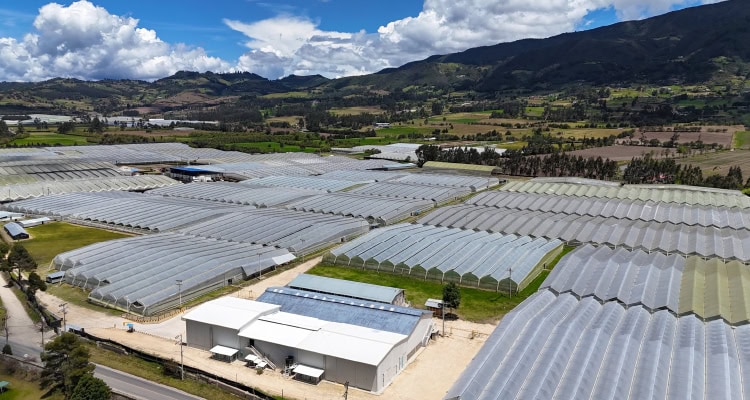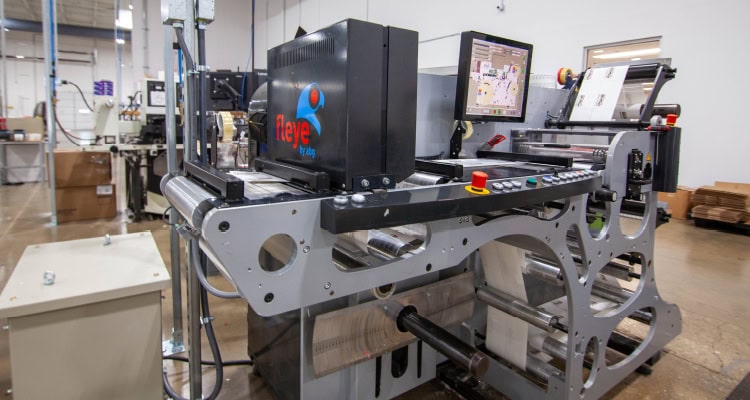14 Moves to Master Demand Surges

Effectively managing increases in demand requires a strategic series of moves—each one calculated to advance your position and ultimately put surges in checkmate.
Spikes in demand can boost revenue and turbocharge growth. Yet meeting these surges, especially when they’re unexpected, poses risks and challenges. If companies can’t keep up, they risk alienating customers. On the flip side, investing heavily to meet a short-lived demand jump can strain a company’s bottom line and leave it with excess inventory.
“Halloween candy is great on October 30 and 31, but it’s not worth much after that,” says Nate Rosier, senior vice president, consulting group leader with consulting firm enVista.
While demand spikes aren’t new, they appear to be getting “spikier,” or more pronounced, Rosier says.
One reason is the rise of social media influencers, says Anshuman Jaiswal, vice president of growth strategy and operations with order management software firm Nextuple. One example is the cucumber shortage in Iceland in summer 2024 that resulted from a viral TikTok trend around cucumber salad recipes.
Identifying Sales Patterns
As marketing and analytical tools grow more sophisticated, companies can identify sales patterns that might not have been obvious before, and then more precisely target customer segments. This enables brands to capitalize on peaks—and can drive surges.
In addition, traditional demand-spiking retail events, like Black Friday and Cyber Monday, have grown more complex, with promotions extending for longer periods and spanning multiple channels.
“Consumers increasingly engage in ‘pre-shopping’ behaviors, browsing and comparing deals online before making purchases,” says Prashant Agrawal, founder and CEO with Impact Analytics, a provider of retail AI solutions. This has led to unexpected and staggered demand surges, rather than predictable single-day spikes.
“A spike in demand can potentially be positive, but it can also be a disaster,” says Travis Tokar, professor of supply chain management at Texas Christian University. A spike may drop off before a company can capitalize on it, leaving customers dissatisfied.
One reason for this is the “bullwhip effect,” or the lack of visibility to a demand surge. Manufacturers are often the last to see data and may be unable to access timely demand signals and then neglect to ramp up production until the spike has already peaked.
Rapid surges in demand “inflict supply chain uncertainties,” adds Debdatta Sinha Roy, principal research scientist with Oracle.
Supply chain professionals need to determine, among other decisions, what levels of supplies to order, how to manage transportation, and when demand will slow—and then place company resources accordingly. An incorrect assessment can increase expenses so they eclipse any jump in revenue.
By thoughtfully deploying both technology solutions and solid strategies, companies can leverage the positives of demand surges and manage the risks. “Companies need to go from playing checkers to playing chess,” Rosier says.
These 14 steps can help your supply chain declare checkmate on the demand-surge challenge.
1. Leverage Technology to Aid Decision-Making

Demand for fresh flowers and plants from Fantasy Farms can jump ten-fold leading up to Christmas, Valentine’s Day, and Mother’s Day. To keep up, the company utilizes a robust production planning system and an AI-driven analytics solution for sales forecasting.
Meeting demand surges often requires unifying and analyzing data that arrives from disparate sources and systems. Individual supply chain professionals may struggle trying to gain the ability to see how each piece of information is interrelated and necessary to meet the demand surge in an optimal way, says Mark Holmes, senior advisor of global supply chain at InterSystems.
Employee brainpower needs to be augmented with technology solutions, such as artificial intelligence (AI), that can aid decision-making in real time. AI tools can incorporate sales trends, social media signals, and other information to help supply chain professionals adjust inventory to meet demand fluctuations.
“Human interaction enhanced with and complemented by automated decision intelligence is where we need to go,” Holmes says.
Fantasy Farms, which grows and distributes fresh flowers, plants, and other products sourced from Colombia, Costa Rica, Ecuador, and Mexico, provides a good example. Demand for the company’s plants can jump ten-fold leading up to Christmas, Valentine’s Day, and Mother’s Day.
During peak demand periods, Fantasy Farms serves more than 40,000 retail locations, says CEO Daniel Sabogal. To accommodate, Fantasy Farms leverages several systems, including a robust production planning system and an AI-driven analytics solution for sales forecasting.
Advanced analytics can also help shippers evaluate tradeoffs between costs and customer service, says Matt Everson, senior vice president of sales and marketing with Intellitrans. Shippers can use analytics to help them make quick decisions that improve the bottom line while keeping customers happy and meeting demand.
“Finding the balance without analytics can be challenging,” he says.
2. Embrace Automation

Automation, along with cross-training and a diversified manufacturing base, helps patch and emblem manufacturer World Emblem quickly respond to demand for large orders.
Automation solutions enable supply chain organizations to respond quickly to spikes in demand. One such organization is World Emblem, a manufacturer of emblems and patches that makes about one million products each day. Automation, along with cross- training and a diversified manufacturing base, helps the company quickly respond to demand, says Randy Carr, the company’s CEO.
While World Emblem typically doesn’t see a holiday-related rush, it sometimes receives bulk orders for, say, 50,000 patches, which will ship within 48 hours. Their competitors’ lead time is about eight weeks, Carr says.
Adding to the complexity, World Emblem’s products are custom-made and the minimum order size is a single item. The company’s technology investments have been key to its ability to meet demand.
“Even though there can be those surges, we are built for our worst day,” Carr says. The company smooths the surges by flexing staff and equipment.
World Emblem operates plants in multiple locations across the United States and on several continents. It built a global management system that sends orders to the location and equipment that can best handle them. The decisions account for factors such as the amount and type of work in process at each location.
For example, if a new order starts with green embroidery thread, the system will consider which sewing machines are already working with green thread, eliminating the need to switch thread colors.
On slower days, employees prep materials and do enough sewing work to bring inventory stock to the stage before customization is required, Carr says.
Cross-training employees has also been key. Algorithms embedded within the management system can determine how to shift work between different machines and employees to meet demand.
3. Work Across Silos
Effectively meeting demand surges often requires multiple functions within an organization—such as finance, supply chain, planning, operations, and sales—to work together.
For example, when retailers plan a major promotion, these departments should connect to ensure, among other things, that they order enough inventory and that each store has the space it needs to handle the featured products.
“You don’t want to run a great promotion where operations is the last to find out about it, and they’re not able to keep up with the spike in demand,” says Jeffrey Bornino, president, North America, with TMX Transform.
4. Build Strong Demand- Management Capabilities
Good demand-planning organizations collaborate with customers as they develop their forecasts. “Customer intimacy is so important,” says Anoop Thulaseedas, associate director of the solutions and consulting business unit with Bristlecone, a supply chain service provider.
While many companies focus on fostering closeness with customers at the sales level, it also needs to occur closer to the supply chain. This helps ensure supply chain operations reflect expected demand as much as possible.
5. Be Wrong in the Right Direction
The goal in building any demand forecast is to minimize deviations from actual events. Complete accuracy, however, is rarely possible. As a result, it often makes sense to determine whether it’s better for the forecast to under- or over-state actual demand, and then develop a model that penalizes the mistake that would be worse, says Sinha Roy of Oracle.
For instance, when determining fulfillment and transportation capacity, it may pay to build the model so it favors over-estimating demand. Then if an unexpected jump in demand occurs, the company is better able to handle it.
6. Increase Visibility Across Supply Tiers
When supply chains run multiple tiers deep, producers tend to connect only with their top suppliers, obscuring visibility to other suppliers.
For example, raw material suppliers typically see core challenges 30 to 60 days ahead of original equipment manufacturers (OEMs). Establishing direct communication channels to suppliers outside of the top tiers can help OEMs re-plan more efficiently, cross-sell, or maybe make large spot buys ahead of their competitors, creating a market advantage.
Producers who want to build more direct communication lines to all levels of their supply base may need to reassure suppliers in the middle tiers that they are not trying to cut them out of the business. Instead, they are trying to gain more timely, in-depth transparency to events impacting the supply chain.
7. Segment Your Customer Base
While many customers have become accustomed to one- or two-day deliveries, some are still willing to wait longer to receive their orders. Particularly in business-to-business transactions, a company can proactively segment its customer base, identifying those who expect immediate delivery and those amenable to waiting, Thulaseedas says.
If the latter group is causing a jump in demand, a company may be able to control expenses by letting these customers know it will start production once it has received a purchase order.
8. Segment Inventory
Many companies settle on a level of inventory—for example, 45 days of inventory on hand—and it becomes a sort of “urban legend” for all its products, says Ingrid Gonzalez McCarthy, vice president, supply chain planning with Gartner.
The problem? “This just assumes all products are the same,” she says.
Companies need to segment inventory based not only on value, but also on lead- time volatility. For items with stable lead times, companies generally incur little risk if they plan for a minimum inventory level, McCarthy says. Conversely, for high-value products with unstable lead times, companies usually can lower risk by having more stock than normal.
9. Develop an Omnichannel Fulfillment Strategy
Companies that lack an omnichannel fulfillment strategy often struggle to meet demand when one distribution point becomes overwhelmed. Using multiple channels, such as in-store fulfillment and multiple warehouses, helps ensure that orders can be fulfilled flexibly and efficiently across various points. This reduces stress on any single channel.
10. Build Strong Relationships

OMNI Systems, a large U.S. private-label manufacturer, counts on long-term relationships to help it manage demand surges. By sharing sales data and partnering on inventory strategies with its suppliers, OMNI is able to make decisions that work for both organizations.
Solid relationships with customers and suppliers can help companies meet demand surges. OMNI Systems, a large private-label U.S. manufacturer, “carries more raw material than many of its competitors,” says Mike Murton, president and COO. This enables OMNI to tackle last-minute orders.
When deciding on inventory levels, OMNI partners with its customers. “We work hand-in-hand with the customer to make decisions that work best for both organizations,” Murton says.
OMNI has built similarly strong, long-term relationships with its suppliers, often sharing data on sales and new business opportunities. Partnering with them and “creating that full circle” linking the customer, OMNI, and the supplier to share information helps all meet demand, Murton adds.
11. Create a Digital Twin to Assess How Best to Calculate Buffer Stock
Creating a digital twin, or virtual representation of the supply chain, and then building real-time models, is a smart way for organizations to conduct simulations. This is more effective than optimizing for each function, such as logistics, production, warehousing, and other areas, which can result in the addition of multiple buffers, boosting costs, explains Dave Petrucci, global leader, supply chain and operations with Protiviti. Simulations done at the enterprise level tend to be more efficient and responsive.
In general, it makes sense to optimize inventory levels at the system level. However, as expectations for lead times get tighter, and as demand- sensing tools become more focused on localized demand, having buffer inventory available at the system level may not be adequate to react quickly to local changes in demand.
“Buffer is often considered a four-letter word in supply chains, but ‘lost sales’ can be far more damaging to a brand,” Petrucci says. Companies need to consider the trade-offs.
12. Rationalize SKUs
Eliminating obsolete or dying inventory items in a warehouse or distribution center helps create room for the products that really matter. When demand jumps for a specific item, it’s easier to move orders out the door.
13. Try Nearshoring
Over the longer term, nearshoring can shorten supply chains, helping companies respond more deftly to demand fluctuations. But switching to nearshoring is not a simple fix, as many components and raw materials currently still come from Asia. Supply chain organizations in other parts of the world need to look at the end-to-end process and all materials involved when deciding whether and how to nearshore.
14. Plan for the Response
Few forecasts will be perfect. As a result, organizations need to invest in their response capabilities, says Bornino. This includes the technology solutions and management processes essential to build an infrastructure capable of supporting a quick response to demand spikes.
